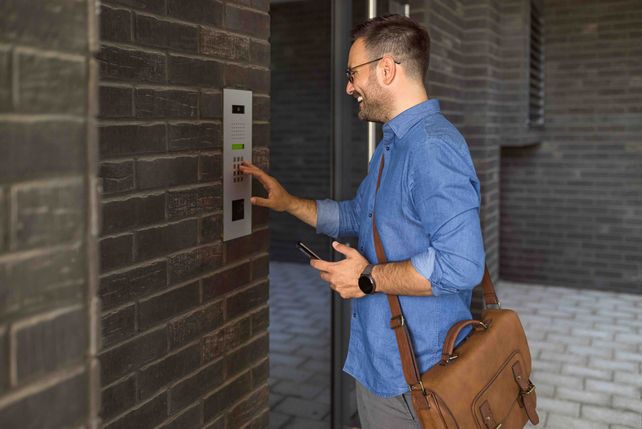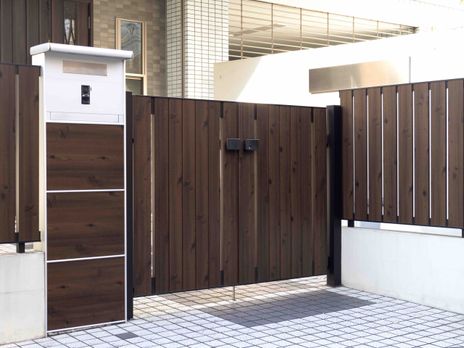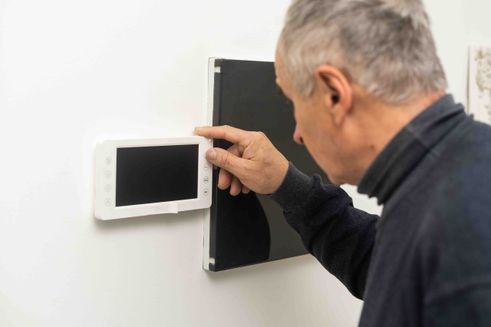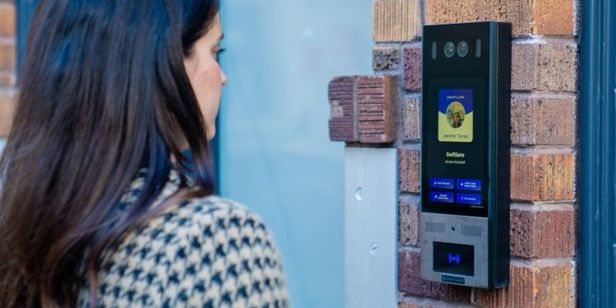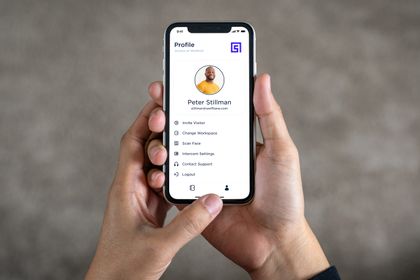In a world where communication and security are paramount, intercom systems have become a vital component in various settings, such as homes, offices, and commercial establishments. These systems not only enable seamless communication, but also ensure access control and enhance security. With a plethora of options available in the market, it is crucial to understand the different types of intercom systems, their components, and the key features to consider when selecting the right system for your needs. In this blog post, we will delve into the world of intercom systems, discuss the benefits of wireless intercoms, and explore their real-life applications.
Quick Overview
- Intercom systems provide secure communication and access control solutions for various settings.
- They come in a range of functionalities, from audio to video capabilities, as well as tailored uses such as home, office and industrial solutions.
- When selecting an intercom system consider features like remote door unlock or live view snapshots for enhanced security and convenience.
Table of contents
- Understanding Intercom Systems
- What are Intercoms
- Types of Intercoms by Functionality
- Types of Intercoms by Use
- Components of Intercom Systems
- Benefits of Wireless Intercoms
- Key Features to Consider When Choosing an Intercom System
- Installation and Maintenance of Intercom Systems
- Real-Life Applications of Intercom Systems
- Frequently Asked Questions
Suggested Posts:
- Best Video Intercom Systems to Buy in 2023
- Access Control Technology Trends for 2023: What to Expect
- Intercoms for Schools – How to Protect and Maximize Safety
- Intercom Systems: Become an Expert at Wired, Wireless, Video Intercoms
Understanding Intercom Systems
Intercom systems serve as a communication and security cornerstone in various settings. They facilitate two-way communication and access control, providing a secure and convenient means to manage entry points. From residential and commercial to industrial applications, intercom systems come in different types, each designed to cater to specific needs.
By understanding their components and functionalities, you can make an informed decision when selecting the perfect intercom system for your requirements.
What are Intercoms
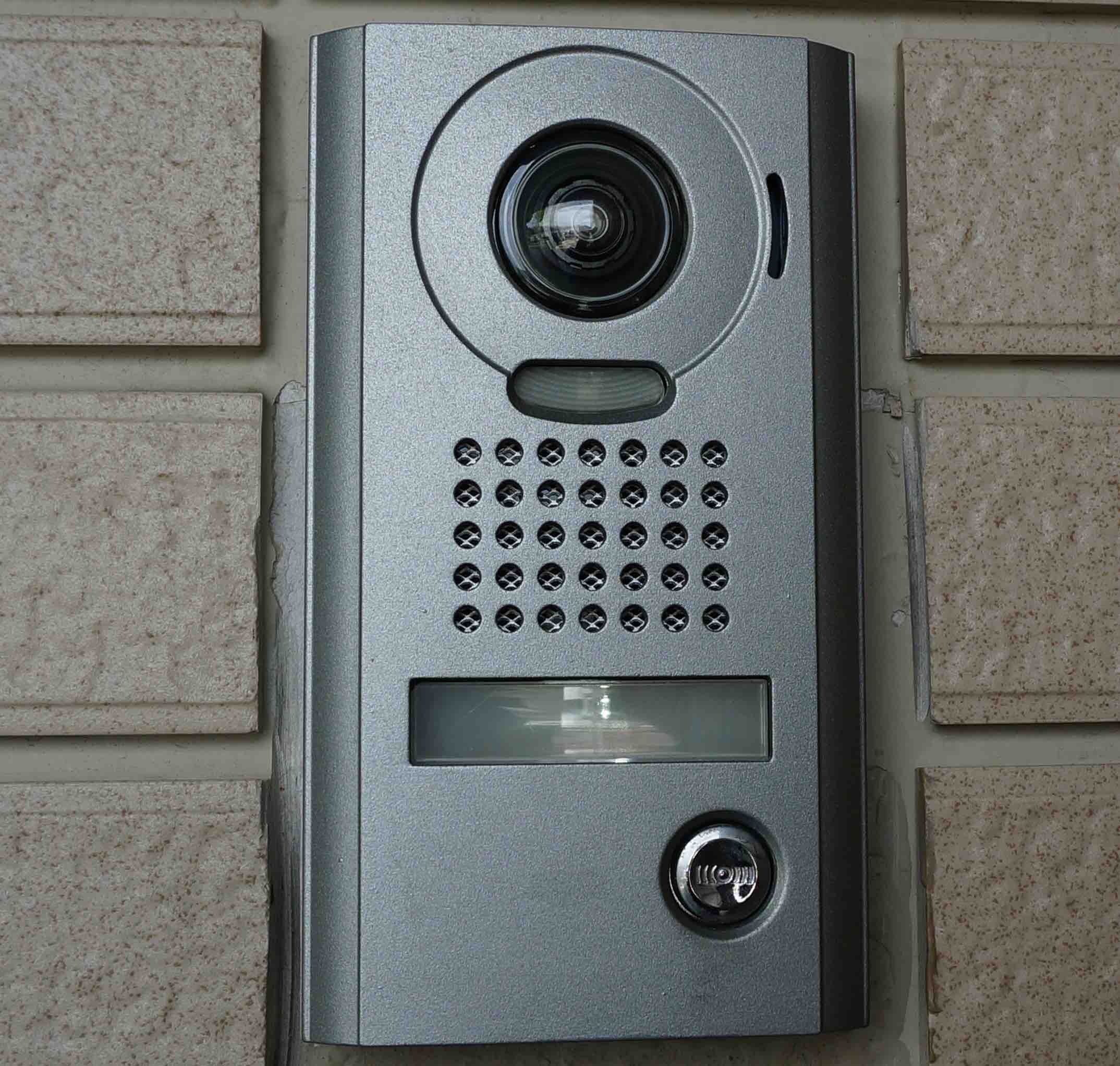
Intercoms are communication devices that enable two-way conversations and access control in residential, commercial, and industrial settings. They have evolved over the years, with new features being added to enhance their functionality and user experience. From simple audio communication to sophisticated video intercom systems, they cater to a wide array of applications, providing security and convenience in various environments.
Different types of intercoms exist, such as:
- Wired intercoms, which are connected through cables
- Wireless intercoms, which use radio frequency signals for communication and data transmission
- Network intercoms, which boast advanced features like video capabilities, remote entry control, and integration with existing security systems.
They can be further classified according to their functionality: wiring, video, door release, monitoring) and the environment in which they are used (home, office, baby, commercial, industrial, schools, apartments.
Types of Intercoms by Functionality
Intercoms can be categorized based on their functionality, with various options available to suit specific needs. Some types of intercoms include:
- Wired intercoms: These intercoms are connected through cables and offer a reliable communication channel.
- Video intercom systems: These systems facilitate visual communication between the exterior and interior of a building without requiring the door to be opened.
- Door release intercoms: These intercoms are designed to activate electronic strikes or magnetic locks, providing access control capabilities.
Monitoring intercom systems are employed for surveillance purposes, ensuring the security of a building or premise. They may be integrated with other security systems, such as CCTV cameras, to provide a comprehensive security solution. By understanding the different functionalities of intercoms, you can choose the most suitable system for your specific application.
Types of Intercoms by Use
Intercoms can be designed for specific uses, offering tailored solutions to cater to various environments and requirements. Home intercoms provide seamless communication within a residence and may include video capabilities for added security. Office intercoms, on the other hand, facilitate communication among employees and enable access control to restricted areas.
For baby monitoring, intercom systems can provide parents with peace of mind, allowing them to keep an eye on their little one from anywhere in the house. Commercial, industrial, and school intercoms offer secure access control and communication between staff and visitors, ensuring a safe environment.
Apartment intercoms, meanwhile, enable secure access to individual units and facilitate communication between residents and visitors.
Components of Intercom Systems
Intercom systems consist of various components that work together to facilitate seamless communication and access control. Some of the key components include:
- Base stations: These serve as the central hub of the intercom system.
- Substations: These are the individual communication points.
- Cameras: These provide video surveillance and monitoring.
- Access control devices: These allow for secure entry and exit.
Cameras provide video capabilities for increased security, and access control devices, such as electronic locks, ensure restricted entry to certain areas.
Benefits of Wireless Intercoms
Wireless intercoms provide a modern, convenient solution for communication and access control. Free from the constraints of cables and complex installation processes, these wireless systems offer several benefits, including remote access and integration with other security systems.
As technology advances, wireless intercoms continue to evolve, adding new features and capabilities to further enhance their appeal.
Remote Access
Remote access is a powerful feature of wireless intercom systems, allowing users to control their intercom system from any location using smartphones or other compatible devices. This capability not only provides added convenience but also enhances security by enabling users to monitor and manage access to their property even when they are not physically present, essentially using their intercom remotely.
Moreover, remote access allows for efficient troubleshooting and maintenance, as system administrators can perform checks and resolve issues without the need for on-site visits.
Integration with Other Systems
Wireless intercoms are designed to seamlessly integrate with other security systems, such as access control and surveillance cameras. This integration enables a comprehensive security solution that provides a unified platform to manage all aspects of a building’s safety and access control.
By integrating various systems, users can monitor and control different security components through a single interface, streamlining operations and enhancing overall security.
Key Features to Consider When Choosing an Intercom System
Selecting the right intercom system is crucial to ensure effective communication, access control, and security for your specific needs. When choosing an intercom system, it is important to consider various features, such as:
- Video capabilities
- Remote door unlock
- Callback
- Live view snapshots
- Multi-tenant support
- Device compatibility
- User-friendliness
By evaluating these factors, you can make an informed decision and select the optimal intercom system that caters to your requirements.
Video Capabilities
Video capabilities are an essential feature in modern intercom systems, providing an added layer of security by allowing users to visually confirm the identity of visitors before granting access. This feature not only enhances safety but also offers convenience, as users can communicate with visitors through video calls without having to physically open the door.
When selecting an intercom system, ensure that it offers video capabilities to meet your security needs.
Remote Door Unlock
Remote door unlock is another crucial feature to consider when selecting an intercom system. This functionality enables users to grant access to their property from a distance, either through a mobile application or a key fob.
In addition to convenience, remote door unlock also enhances security by allowing users to control access to their property without having to be physically present. When choosing an intercom system, look for one that offers remote door unlock capabilities for added flexibility and control.
Callback
Callback is a useful feature that allows users to:
- Return missed calls from visitors
- Ensure seamless communication and timely response
- Initiate a return call to the visitor, ensuring prompt communication and reducing the likelihood of missed connections
This feature can be particularly helpful in situations where a visitor, such as a delivery person, may have called the intercom while the user was away or unable to answer.
Be sure to consider this feature when selecting an intercom system.
Live View Snapshots
Live view snapshots provide real-time images of visitors, offering an additional layer of security and peace of mind. With this feature, users can view live images captured by the intercom system’s camera, allowing them to visually confirm the identity of visitors before granting access.
This can be particularly useful in situations where audio communication may not be sufficient to verify the visitor’s identity. When choosing an intercom system, look for one that offers live view snapshots for enhanced security.
Multi-tenant vs Single tenant
When selecting an intercom system, it is essential to consider whether a multi-tenant or single tenant system is more suitable for your needs. Multi-tenant systems are designed for use in buildings with multiple units or tenants, allowing visitors to search a directory of tenants and place a call to their respective apartment unit.
Single tenant systems, on the other hand, provide each user with a unique software instance running on infrastructure that is not shared with other users. Consider the specific requirements of your building and the preferences of the occupants when choosing between multi-tenant and single tenant intercom systems.
Fixed Receivers vs Bring your own device (Phones, Tablets, Computers)
Device compatibility is an important factor to consider when selecting an intercom system. Some systems come with fixed receivers, which are dedicated devices that serve as the communication point for the intercom system. Alternatively, bring your own device (BYOD) systems allow users to connect to the intercom using their own devices, such as smartphones, tablets, or computers.
BYOD systems offer more flexibility and convenience, as users can interact with the intercom system using the devices they already own. However, fixed receivers may provide greater security and reliability. Assess your needs and preferences to determine which option is best for you.
Number of Devices Support
The number of devices supported by an intercom system has a direct impact on its scalability and flexibility. Systems with a higher number of supported devices can accommodate more users and devices, offering greater versatility and adaptability. This can be particularly important in settings where multiple users or devices need to be connected to the intercom system, such as apartment buildings or commercial spaces.
Be sure to check the maximum number of devices supported by the intercom system to ensure it meets your requirements.
Number of Locations Supported
The number of locations supported by an intercom system is another critical factor to consider, especially for multi-site installations. Intercom systems that support multiple locations can be managed centrally, streamlining operations and simplifying management across different sites.
This can be particularly advantageous for businesses and organizations with multiple premises or for property managers who oversee several buildings. Ensure that the intercom system you choose supports the number of locations required for your specific needs.
Night Vision
Night vision capabilities are an essential feature for intercom systems, especially in low-light conditions. With night vision, users can clearly see visitors even in the dark, ensuring security and peace of mind at all times.
When selecting an intercom system, look for one that offers night vision capabilities to provide clear images and enhanced security in low-light conditions.
User-Friendliness
User-friendliness is a crucial aspect to consider when choosing an intercom system. Systems that are easy to use and navigate not only provide a better user experience but also ensure efficient operation and seamless communication. Factors that contribute to user-friendliness include intuitive interfaces, clear instructions, and compatibility with various devices.
When selecting an intercom system, prioritize user-friendliness to ensure a positive experience for all users. This will ensure that the system is easy to use and navigate, providing a better user experience.
Installation and Maintenance of Intercom Systems
Proper installation and maintenance are essential for the optimal performance of intercom systems. Factors such as:
- Wiring requirements
- Intercom type
- Location
- System complexity
Factors can affect the installation process and the ongoing maintenance of the system.
By understanding these factors and ensuring regular upkeep, you can guarantee smooth communication, effective access control, and enhanced security for your property.
Installation Factors
When installing an intercom system, it is important to consider various factors that can affect the installation process and the overall performance of the system. These factors include:
- The type of intercom system
- The wiring required
- The number of units to be installed
- The signal range
- The compatibility with the building structure
Considering these factors will ensure a successful installation and optimal performance of the intercom system.
Taking these factors into account will ensure a smooth installation process and a well-functioning intercom system.
Maintenance Tips
Regular maintenance is crucial for the optimal performance of intercom systems. To keep your system functioning at its best, it is essential to clean the indoor units, check the wiring (for wired systems), and test the system periodically.
In addition, it is important to keep the software up-to-date and ensure that the internet connection is secure. By following these maintenance tips, you can ensure the longevity and reliability of your intercom system.
Real-Life Applications of Intercom Systems
Intercom systems have a wide range of real-life applications, providing communication and access control solutions in various settings. From single-family homes to commercial spaces and healthcare facilities, intercom systems are an indispensable tool for ensuring security, convenience, and effective communication.
By understanding the different types of intercom systems and their respective features, you can select the perfect system to meet your specific needs and requirements.
Single Family Homes
In single-family homes, intercom systems serve as an essential tool for communication and access control. They facilitate communication between various rooms within the house and provide a secure means of verifying visitors at the front door.
By selecting the right intercom system for your home, you can enjoy enhanced security, convenience, and peace of mind, knowing that your property and loved ones are protected.
Indoor Intercoms for Homes
Indoor intercoms are specifically designed to facilitate communication within homes, such as between rooms or floors. These systems offer a convenient way for family members to communicate with each other without having to physically move from one room to another. They can also be used for access control, enabling homeowners to:
- Grant or deny access to visitors at the front door
- Monitor and communicate with individuals at the front door
- Enhance security by providing a means of communication throughout the home
By incorporating an indoor intercom system in your home, you can enjoy seamless communication and enhanced security.
Apartment Buildings
Intercom systems play a crucial role in apartment buildings, providing secure access control and efficient communication between residents and visitors. These systems enable tenants to grant access to the building with the most efficient use of access tokens, ensuring comprehensive security in communal areas.
In addition, intercom systems can be integrated with other security systems, such as surveillance cameras, for a more comprehensive security solution. By selecting the right intercom system for your apartment building, you can ensure the safety and convenience of all occupants.
Commercial Spaces
In commercial spaces, intercom systems serve as an essential tool for communication between employees and visitors, as well as for access control to restricted areas. They can be integrated with other security systems, such as CCTV cameras and access control devices, to provide a comprehensive security solution for businesses.
By choosing the right intercom system for your commercial space, you can ensure the safety and security of your employees, customers, and assets.
Healthcare Facilities and Educational Institutions

Healthcare facilities and educational institutions also rely on intercom systems for secure access to restricted areas and communication between staff and visitors. In these settings, intercom systems provide an added layer of security and control, ensuring the safety of patients, students, and staff.
By selecting the appropriate intercom system for your healthcare facility or educational institution, you can enhance security and communication while maintaining a safe environment.
Schools
Schools use intercom systems for a variety of purposes, including announcements, access control, and communication between classrooms and offices. These systems provide a reliable and efficient means of communication, ensuring that important information is conveyed to students and staff in a timely manner.
Additionally, intercom systems in schools can be integrated with other security systems, such as surveillance cameras, to ensure the safety of students and staff. By choosing the right intercom system for your school, you can enhance communication and security while providing a safe learning environment for all.
Conclusion
Intercom systems are an indispensable tool in various settings, providing secure access control and seamless communication. By understanding the different types of intercom systems, their components, and key features, you can choose the perfect system to meet your specific needs. Additionally, proper installation and maintenance are crucial to ensure optimal performance and longevity of the system. Whether it’s for a single-family home, an apartment building, a commercial space, or an educational institution, an intercom system can enhance security, communication, and convenience for all occupants.
Frequently Asked Questions
What is the use of intercom?
Intercom systems are electronic devices that enable two-way communication between people. They also allow for remote access control to a building, making them essential for secure living and working environments.
Intercom systems are becoming increasingly popular in both residential and commercial settings. They provide a secure and convenient way to communicate with visitors, allowing for quick and easy access.
What is an example of intercom?
An example of an intercom is a one-way or two-way communication device used in apartment buildings, allowing visitors to buzz in and residents to respond. Intercoms can also incorporate connections to public address systems, walkie talkies, telephones and other intercoms.
Do intercoms still exist?
Intercom systems still exist in both indoor and outdoor forms, providing a number of benefits. They have been popular since the ‘70s and can be used as door-entry devices for commercial buildings or apartment blocks.
They are a great way to ensure security and provide convenience for those who need to access the building. They can also be used to communicate with visitors, allowing them to be identified.
What are the main types of intercom systems available?
Intercom systems come in three main varieties: wired, wireless, and network. Each one has its own set of benefits and capabilities.
How can I ensure the optimal performance of my intercom system?
To ensure optimal performance of your intercom system, regular maintenance such as cleaning the indoor units, checking the wiring and updating the software is essential.
Upgrade Your Building Security
Get in touch with a Swiftlane specialist for more information on the best access control and video intercom solution for your building.

